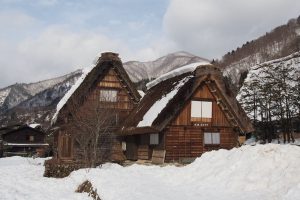
Landscape lighting requires vision. It is easy to get caught up in the light fixture and forget about the impact it will make. Many people buy fixtures off the shelves of big box stores or from pretty catalogs without understanding the fixture’s light output and beam spread. A failure to consider the light output and beam spread can seriously hinder any effect one is trying to create. Brass landscape lighting can be disastrous if it is designed with fixtures in place of light.
Unrealistic budget
Even though your design focus should be on the lighting effect, or the lamp, more than the fixture, that doesn’t mean that you don’t need to consider quality fixtures. It is vital to plan your budget and determine the materials and fixtures you will use. While most fixtures can achieve the exact same effect, not every fixture is capable. You will find many inexpensive fixtures on the marketplace that can temporarily produce the lighting effect desired. Unfortunately, cheap aluminum and plastic fixtures that are commonly found in big box stores won’t be able to withstand outdoor stress or wear. Your fixtures will quickly become damaged and worn by the elements, like rain, snow and ice. Your products will soon fail because you have an unrealistic budget.
Wire connections
The most common problem with lighting systems is their wiring connections. The weakest part of any lighting system is a poor wire connection. Your wiring connections are where moisture is most likely to get in. Moisture that gets into an insulated wiring can become trapped and can’t be escaped. This trapped moisture will cause your wiring to become corrosive and break down. Even if you tape your wire nuts, or use Snap-On connectors for quick connections, this won’t ensure that water and moisture are not getting into your wiring. Moisture, the enemy, can cause problems in your light system. Avoid moisture intrusion from the beginning. This will cause problems in your lighting system. The best wire connections to protect your lighting system are made with heat shrinkable, water tight connectors. This unique connection will keep moisture out of other connections.
Wire
It is a mistake to use the wrong wire diameter (or wire gauge) as it can lead systems to being under voltage, tripping or failing. You can use smaller diameter wire for many reasons. It’s a smart move to use smaller diameter wires where it is appropriate. Because smaller diameter wires cost less than larger ones, you will be able to save money. Led technology can use smaller wire to reduce costs. Although this is true in a perfect world, we know that 12 gauge burial wire is the minimum gauge that you should use if it’s your intention to make a lighting system that lasts. Also, we recommend that you place your wire 6-8 inches under the ground. Burying your wire hides it. It also protects the wire and its connections from being damaged.
Fixture location
The wrong application will cause even the sturdiest fixture to fail. Path lighting should never go in turf areas. There is a greater chance that your fixtures will be damaged if they are placed in turf areas. There are many dangers that could damage your lighting system, such as mowers, trimmers, and hedgers. For path lights, and other above ground fixtures such as lighting fixtures, flowerbeds are ideal because they are resistant to lawn mowers. When choosing fixture location, it is important to think about two things: where the fixture should go to best achieve the effect that you want and whether or otherwise the fixture could be damaged. Bad planning can result in a fixture failing to perform its intended function, which will ultimately cost you your investment.
Light glare
People who install their landscape lighting don’t always consider the glare. Glimmering lights can be distracting and unpleasant. Your goal when lighting your landscape is not to be distracted by the light source but the effect it creates. Many up-lights have eyelids. To block the glare from the viewing point, eyelids should always been used. The viewpoint is the point from which the landscape will be best viewed and appreciated. For example: if you want to illuminate the landscape around your front home, the view point, the best visual element, the focal point, that will best highlight and capture the beauty of your home’s surroundings, might be directly in front. Standing in this location, it is important not to be blinded from the bright glare emanating from the fixtures or lamps.




